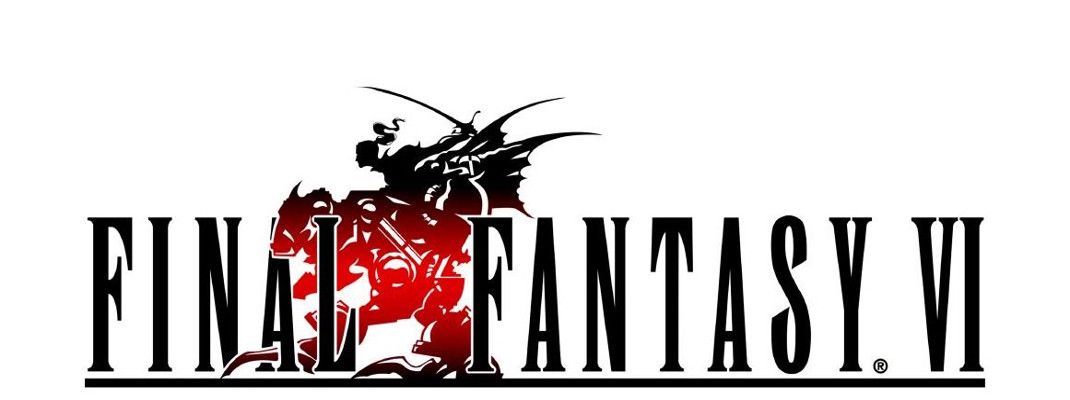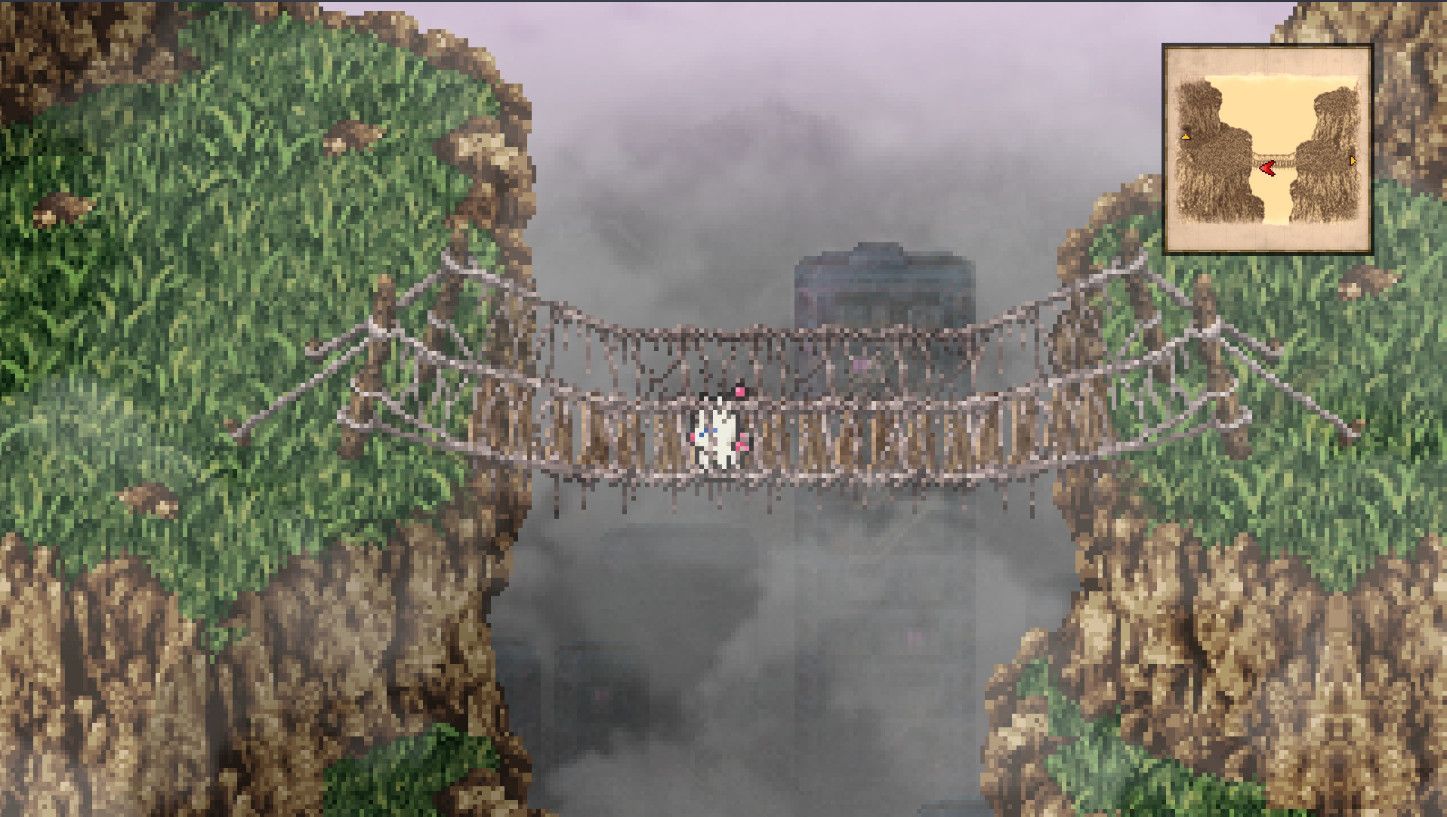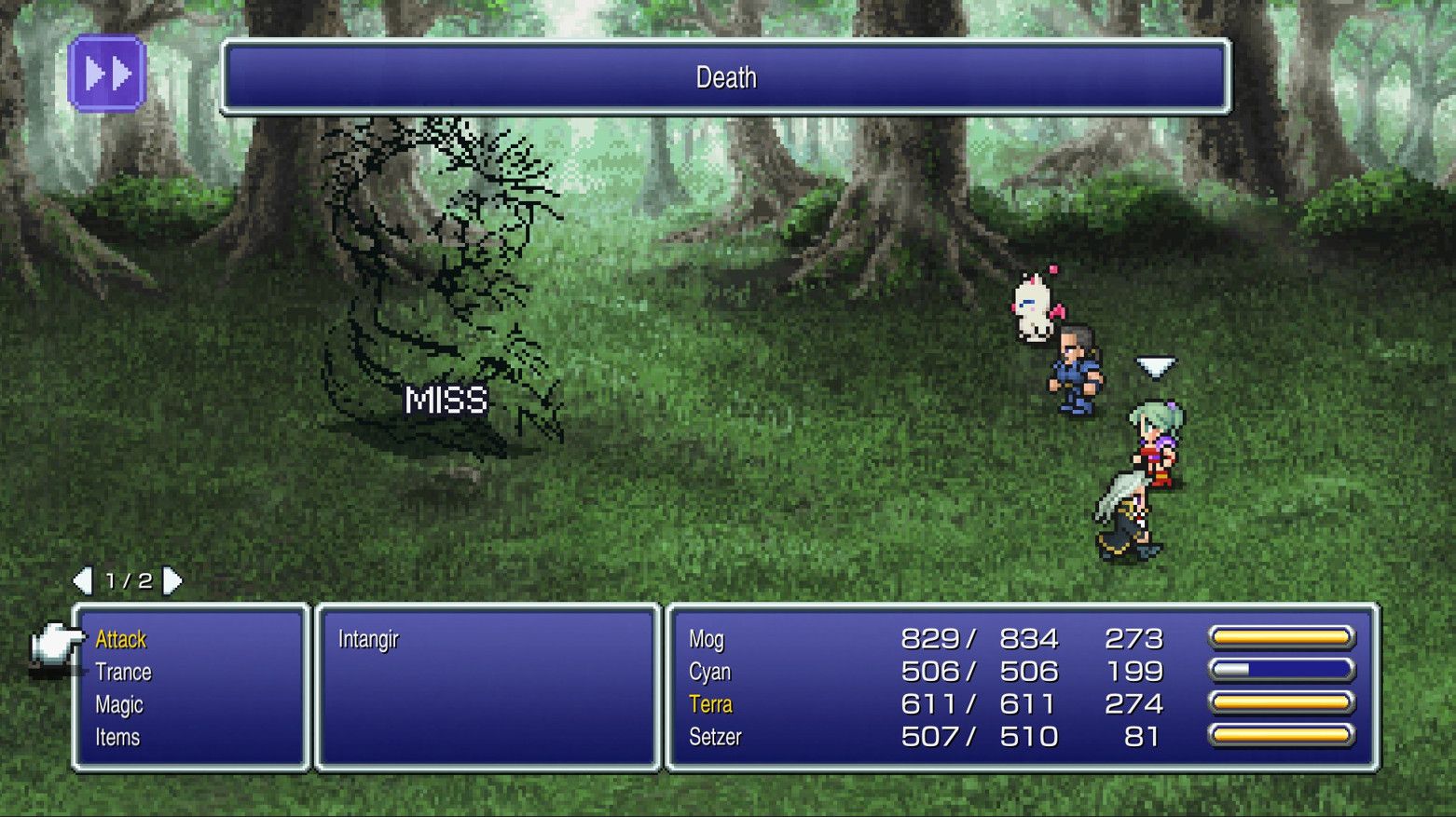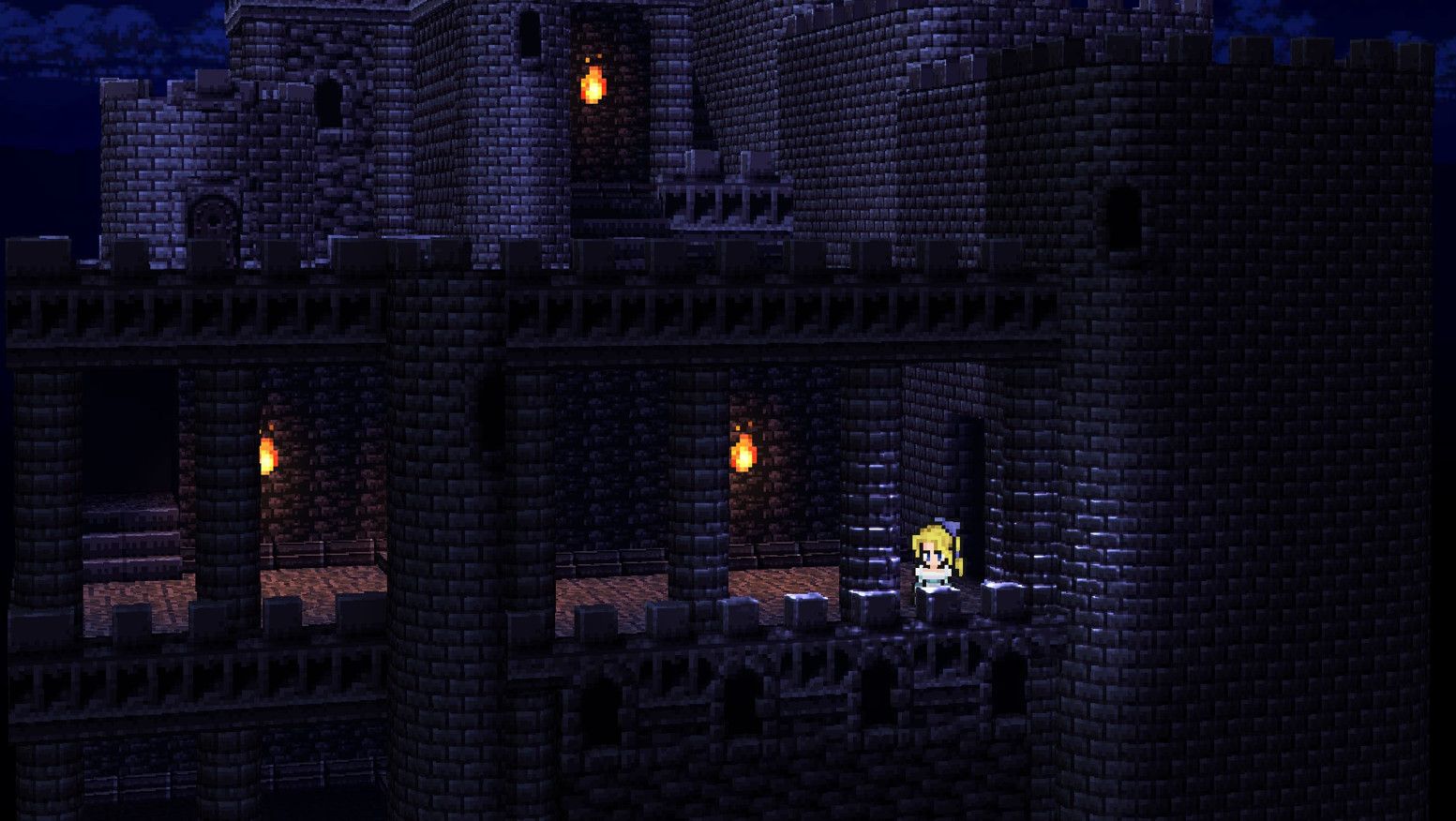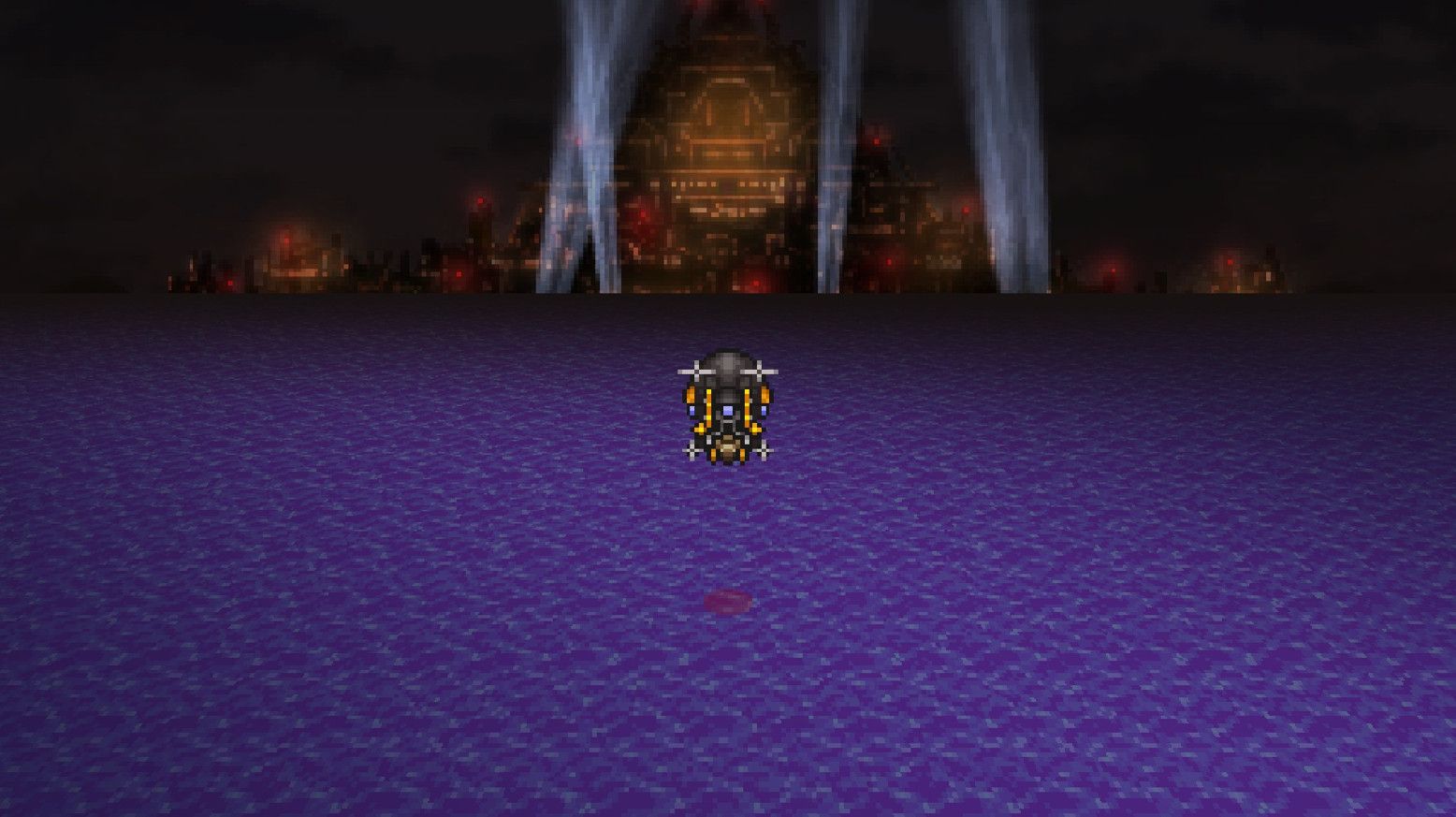Among Final Fantasy fans there's no clear consensus about which game is the best, but many would give that honor to Final Fantasy VI, and an even larger segment would consider it one of the top tier entries. Originally released in 1994, Final Fantasy VI doubled down many of the themes they established in the previous games. An emphasis on storytelling and character development were series staples at this point, but the developers went above and beyond the bar set by previous entries. Final Fantasy VI is a gaming masterpiece. This is a claim that few would dispute. The real question on everyone's mind is how does Final Fantasy VI Pixel Remaster compare to the other versions of this title?
Final Fantasy VI begins on a journey to the snow-covered mining town of Narshe. Terra is accompanied by imperial soldiers Biggs and Wedge, the first of several Star Wars references. There are reports that there's a magical being known as an esper frozen in the mines, which is of great interest to the Empire. The mission seems to be going well, the imperial Magitek walkers make short of any resisting townsfolk as they make their way to the esper but then something happens with the esper and Terra ends up separated from her companions. Free from the Empire's captivity, she meets Locke and Arvis who tell her about a group of resistance fighters known as the Returners who are fighting the Empire.
The overall tone of Final Fantasy VI is darker than its predecessors. Fighting an evil empire was far from a revolutionary theme in this game, but some of the subject matter felt more visceral and real than what people had come to expect from Final Fantasy. The Empire is truly an evil force, conducting experiments on humans to infuse them with abilities that create super soldiers through genocidal means. Espers lived peacefully until the Empire imprisoned them and used unethical means to extract their powers only to then discard them like rubbish once all useful energy has been extracted from them. This conflict between the Empire and the otherworldly beings establishes a war of us and them, but that doesn't mean the Empire is above committing atrocities against other societies in the human world. Within the Empire is the main antagonist Kefka, who perpetrates the worst deeds out of any of them and can be argued is the greatest villain within the franchise. His mind might not be all there, but that doesn't prevent him from committing truly heinous acts.
In addition to fighting an enemy that seems to draw inspiration from some of the more horrible chapters of human history, many of the characters are battling their own past trauma. Themes of loss and failure are repeated as we learn more about the characters' history. Suicide is something that's even touched on which was unheard in a Nintendo game in the '90s. But a theme of Final Fantasy VI is perseverance. Many of the events the haunt the characters can't be undone or even righted, but they push through and learn to adapt in the less-than-ideal circumstances life throws at them. There are some quests that even when successfully completed result in failure, but does bring closure to the relevant aspect of the story.
The magic system in Final Fantasy VI is more open than the previous entries. Before this a character's ability to use magic was dictated by their job, with the exception of the experimental growth system in Final Fantasy II. Final Fantasy VI follows a semblance of the job system where each character has their own unique ability and different strengths, but early on magic becomes available to everyone. As the story progresses the player acquires Magicite, which teaches characters spells over time when equipped, so every character can learn every spell if players have the patience.
Final Fantasy VI is one of the more open-world entries in the series. In fact, at the time of its initial release release it boasted much more freedom than the previous entries. The first half follows a fairly linear progression, and while there are optional things players can do, the story follows a predetermined path and accessible areas are limited to the current story objectives for the most part. Even party line-up decisions have plot-based restrictions. The second half of the game becomes much more open ended. The player can recruit their party members in pretty much any order they want after they have three certain party members. The order at which the player tackles events in the second half of the game is entirely up to them, and outside of a few specific events the bulk of the second half is entirely optional though highly recommended. Going to the final dungeon as soon as it's possible with a party of three is possible, but highly discouraged as there are so many great moments the player would miss out on.
The game mechanics are mostly the same as every other version of this game with a couple exceptions. Sabin's Blitz commands have been virtually idiot proofed. During the review process an incorrect Blitz input error only happened once and that was done intentionally just to see if it was even possible in this version. Gone are the days when the command needs to be entered with Street Fighter style smoothness and from memory. In the Pixel Remaster the player selects what Blitz they wish to perform and enter the commands shown on screen at whatever speed is comfortable. If a wrong button is hit as long as it's not the confirm button the player can start over and properly execute the Blitz. Old school fans might complain this removes the pride in memorizing it and properly executing the command, but this does make the game much more accessible to newcomers or people who just don't have the patience for fighting game special moves. A quality-of-life improvement that makes battle management easier is with Cyan's Bushido skill. Instead of having to wait for a meter to fill to execute his sword technique the player just selects which one they want to execute from a command menu. The player can then give other battle commands to the other characters while they wait for Cyan to do his thing. Some other bugs and glitches have been fixed. The blind status ailment for one now actually causes the afflicted character to miss. And those looking for an easy way to take out the Intangir the Vanish/Doom (Death) trick no longer works.
One of the most iconic and subsequently-anticipated moments in Final Fantasy VI is the Opera House scene. With the work done on the sound remastering there was a lot of speculation of how this will sound and there are actual vocals. Celes's singing doesn't quite have the same level of vocal mastery one would expect from an opera singer, though. Her singing is technically proficient and in key, but one couldn't help but think it lacks the operatic chops of someone like Tarja Turunen. Celes's vocals sound amateurish, but this perfectly fits with the story. She's a general, not a singer, and having her sound like a professional opera singer would take away from the story. She's doing her best and does a fine job, but as stated in the original translation she's not some opera floozy. Critiquing her performance aside, the redone opera scene is simply magnificent. Watching it unfold for the first time inspires the same sense as awe as the original did back in 1994. The 3D modeled castle set only amplifies the level of impressiveness, and while the Pixel Remaster aesthetic is good, one can't help but wish the whole game was done in this graphic style.
Skip this paragraph for mild spoilers if you haven't played Final Fantasy VI, but one of the changes that comes with this Pixel Remaster is the censorship of the scene where Celes is held prisoner by the empire. In the original she's beaten by the imperial troops while chained to the wall. In some subsequent re-releases they removed the beating, including this one. This is an unfortunate decision for a couple of reasons. The first is the scene just looks goofy when it plays out this way, with Celes standing there while being told this is what happens to those who betray the empire. She then collapses for no reason. More importantly, removing this undermines the fact she's a strong and capable general. In 1994 there weren’t a ton of strong female characters in games, and the resolve she showed during this scene cemented Celes as one of the few. She was one of the highest-ranking generals in the empire and committed treason when she realized how horrible they were. She didn’t waver in her resolve despite being chained, beaten and facing execution. She didn’t hold her tongue or show any weakening of her conviction. Conversely, not only did this cement her as one badass woman, but it also showed just how ruthless the empire can be. Softening this scene undermines both of those points and reduces Celes to a damsel in distress that needs Locke to save her.
Like the other games in the Pixel Remaster series, the graphics and sound have received an overhaul. The reworked graphics look true to their 16-bit 1994 counterparts except they look good in modern HD displays with 16:9 aspect ratios. It might not be the visual reworking that everyone was hoping for, but it succeeds at what it was intended to do, and is an improvement over the terrible character sprites in the Steam/mobile version a few years ago. Certain areas look much nicer than they did in the original version, particularly some of the Mode 7 sequences. There are great details in the background, like seeing the towers hidden behind the mist while climbing Mt. Zozo. Like the previous Pixel Remasters the sound remixing brings new life to each track by making it sound more like real instruments instead of MIDI representations. Hearing Decisive Battle with guitars, synths and violins brings a new sense of epic warfare to the conflict. Cyan's theme carries an even more solemn air and Kefka's sounds like an even bigger indicator of his lunacy. As great as the original soundtrack was this can be considered a net improvement, though its understandable if nostalgia longs for an option for the original sound version. The Kefka's Domain CD set was a great way to listen to the original soundtrack back in the original day, and a similar collection for the Pixel Remaster soundtrack is something that many fans would want.
Final Fantasy VI Pixel Remaster is the version that has come closest to recreating the excitement of playing the game for the first time on the SNES. The goal of the Pixel Remaster series is to create the games not as a modern HD version but as a true to the original version that has some updates to cater to modern sensibilities. The graphics and sound aren't identical to the original, but they're faithful recreations. Aside from the changes to a couple character's special abilities, the gameplay and challenge remains what it was during the original release. As is standard practice for the Pixel Remasters none of the bonus dungeons or other extra content that was added to the Game Boy Advance versions is included, but there's a music player, bestiary and art gallery of Amano's sketches.
Closing Comments:
Final Fantasy VI Pixel Remaster is an admirable update to one of the greatest games of all time. The story remains as captivating now as it did when it was released almost thirty years ago, and even with the limited power of the hardware, the artwork and music helped bring everything to life. The Pixel Remaster updates everything without straying too far from the original version, which is great for those looking for a nostalgia fix, but may be lacking for those who wanted a greater modernization with the re-release. Regardless of those factors, Final Fantasy VI has arguably the best story in the franchise and some of the most memorable characters. The system of active turn-based combat with random encounters is one of the way it shows its age, but it still remains one of the better executions of the format. Final Fantasy VI is a must-play for any RPG fan and the Pixel Remaster is a great way to experience this classic.

